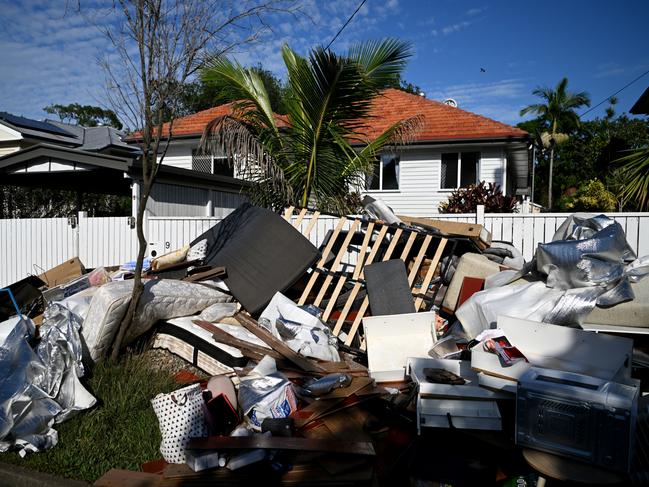Opinion: Queenslanders must adapt to extreme weather events
A new era of extreme weather is already upon us, one with more severe events devastating communities, writes Andrew Hall.
Opinion
Don't miss out on the headlines from Opinion. Followed categories will be added to My News.
One of the misconceptions of the current climate debate is that achieving net-zero targets will somehow reverse the impacts already being felt, especially in countries such as Australia, where weather extremes are most acute.
The fact is a new era of extreme weather is already upon us, one with more severe events, devastating communities, compromising our infrastructure and reinforcing the severity of climate change.
The major flooding and severe weather events in Queensland this year also served to reinforce that our homes and communities are not built in the right areas, or the right way to deal with these disasters.
As a born Queenslander who has lived through some of the state’s worst floods, I understand the significant emotional and financial toll these worsening disasters are having on our communities. February’s flood is a very raw and recent example of this as more than 140 suburbs and communities around Brisbane and the Moreton Bay region experienced significant inundation.
These areas alone accounting for 32 per cent of all claims by count for the event across Queensland and NSW, with neighbouring cities, including the Sunshine Coast, Logan and the Gold Coast accounting for 60 per cent of all claims by count.
As insurers, we know that disasters occur when hazards, such as climate change, meet vulnerability.
Vulnerability has many causes, including historical poor land planning decisions.
Released on Thursday, the Insurance Council’s Insurance Catastrophe Resilience Report 2021-22 is a snapshot of one year’s extremes.
It shows us the events are sudden, but the recovery will take years.
Insurers have geared up to work as quickly as possible to help customers recover, but long-term resilience and mitigation is the only objective that will reduce the risk.
To fully understand the impact of extreme weather to Australian communities, the Insurance Council engaged leading think-tank the McKell Institute to calculate the cost of this year’s floods across the entire economy – and the results are staggering.
According to McKell, extreme weather over the past 12 months cost every Australian household an average of $1532 through price impacts on agricultural goods, as well as the additional government expenditure on recovery efforts funded through taxation.

This is well above the 10-year rolling average of $888 per household.
This figure is expected to jump to $2509 by 2050, when the direct economic cost of extreme weather events is set to reach $35.24bn per year.
At present, no region in Australia is uninsurable, however rolling extreme weather events are driving up premiums in parts of the country most exposed to risk and rendering insurance unaffordable for those who can least afford it.
Queensland’s north is hardest hit by rising insurance premiums, with home and contents insurance costing about 1.8 times more than in the south.
Without increased funding to make Australian homes, businesses, and communities more resilient to extreme weather, coupled with a change in approach to what we build and where we build it, the risk profile of communities exposed to extreme weather risk will not improve and neither will the growing costs of insurance.
As residents remain scattered and await the chance to rebuild, we are seeing a shift in government policy, led by the new federal government’s commitment to invest $200m a year in resilience measures for future-proofing our communities and reducing vulnerability to extreme weather.
But we need to understand this is only the start of the investment required.
States and territories need to also contribute a larger slice of the taxes and duties collected from landowners directly to fixing up and protecting exposed communities.
The $741m Resilient Homes Fund, co-funded by the Queensland and federal governments, is another positive step in helping Queensland homeowners build back better after disasters.
In reality, this needs to be a permanent scheme.
There are dozens of towns across regional Queensland where flood exposures remain too risky to both life and property.
Focusing on resilience and mitigation at a property and community level will not only better protect Australians, but it will also improve insurance affordability and availability.
We have a once-in-a-generation opportunity to invest in our future.
We must respond to these changes that are affecting our lives, while doing all we can to ensure that the consequences of these changes do not get worse.
Andrew Hall is CEO of the Insurance Council of Australia




